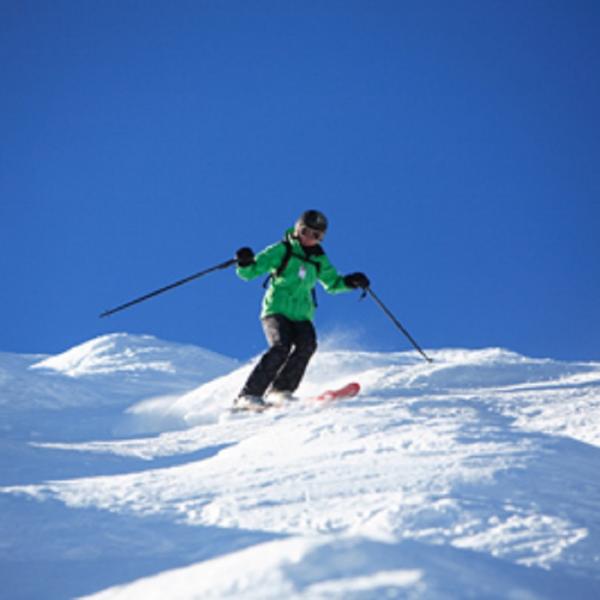
Unless you are a REALLY experienced alpine skier, you probably would not attempt the moguls and aerials that you see in the freestyle skiing events in Sochi. As a matter of fact, it would be highly discouraged for anyone to try something so advanced without the proper training.
Katie Varnado, Sports Medicine Director for ATI Physical Therapy, found herself doing moguls by accident during her first year as a skier. Moguls are mounds of snow that are meant to be maneuvered around, while performing high-quality, aggressive turns at high speeds.
“I was going down a run that I was unfamiliar with, took a wrong turn and landed in the moguls. It was my only option – the only path that would lead me to the bottom of the hill,” said Varnado. “I could have been seriously hurt. I took a few falls, but awkwardly made it through the moguls and reached the bottom of the mountain without any scars.”
Common Ski Injuries
Due to the nature of the sport, freestyle skiers are no strangers to knee injuries – most commonly ACL (anterior cruciate ligament) tears or MCL (medial collateral ligament) tears, or a nagging pain from patellar (knee cap) tracking issues and muscle strains. The ankle is fixed in the ski boot, so the force moves up the body to the next vulnerable segment/joint - the knee. Tears are common because these ligaments help to prevent excess knee rotation. When a skier falls, the knee is almost always rotated during the fall. If the speed and force through the joint are more than the ligament can withstand, an injury occurs.
Skiers absorb the impact of the bumps and hard landings by bending at the knees and hips, so the hips need to be conditioned as well.
Keep Your Knees and Hips in Ski-Ready Shape
You can’t strengthen the vulnerable ligaments, but it’s important to strengthen the muscles around the knee:
• Focus on a balanced strength approach for quadriceps and hamstring muscles.
• Make sure to work the glute and core muscles for hip strength and stabilization.
• Incorporate squatting and lunging exercises into your workout.
• Start and/or finish your workout with a lower-body stretching routine.
Once you’re prepared for your downhill adventure, be sure you are staying in control while skiing to avoid falls - ski on appropriate runs for your skill level, and don’t go faster than you are comfortable with.
Attempting aerials may be even more dangerous than approaching unwelcome moguls on your ski run. The twists and turns, along with high-impact landings require extensive training.
“My advice: Don’t try this at home,” warns Varnado. “Stick to well-marked paths you are familiar with, and take lessons before moving on to tricks and jumps.”
If you’re experiencing pain, Complimentary Injury Screenings are available at an ATI Physical Therapy location near you. Call today to schedule yours!
